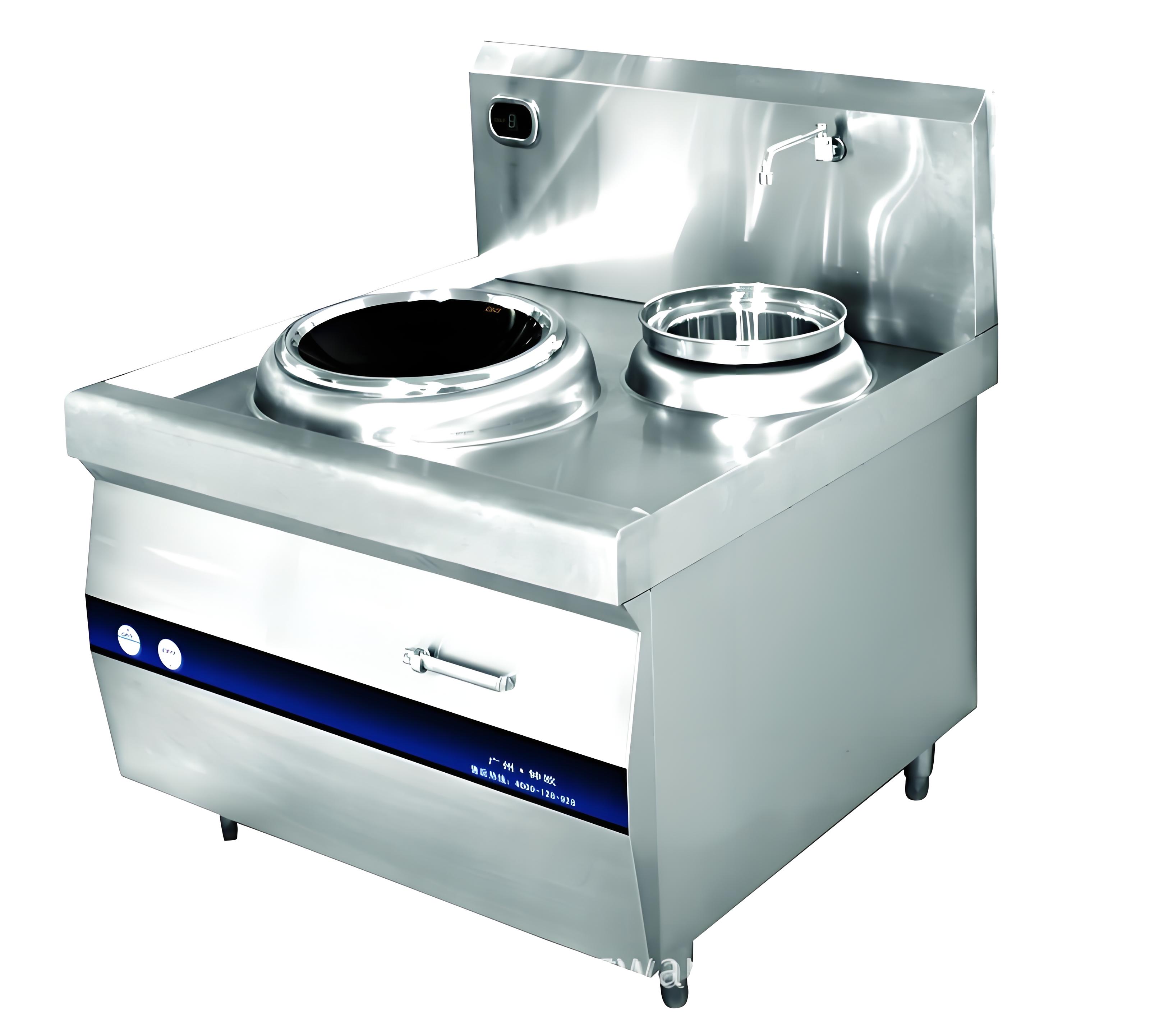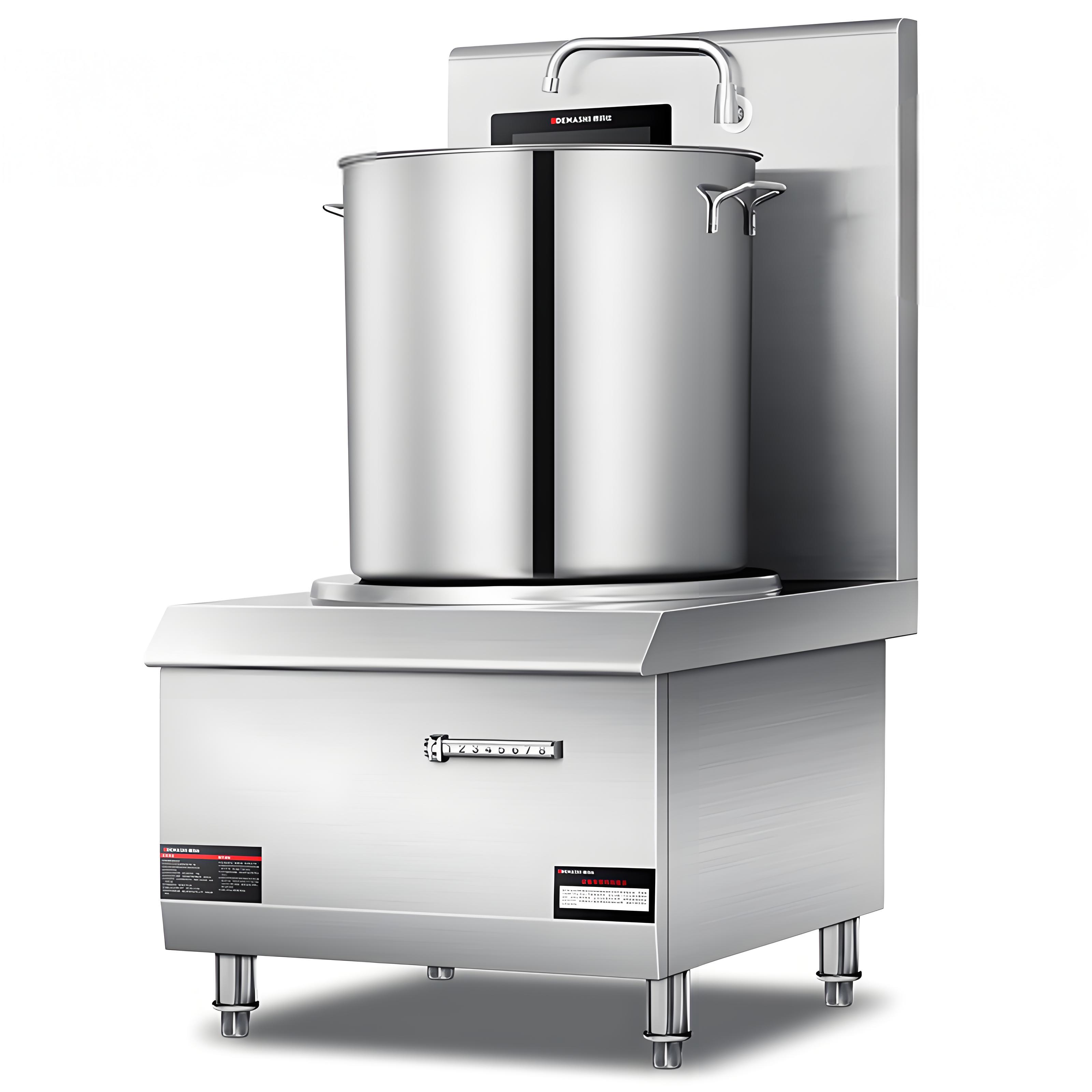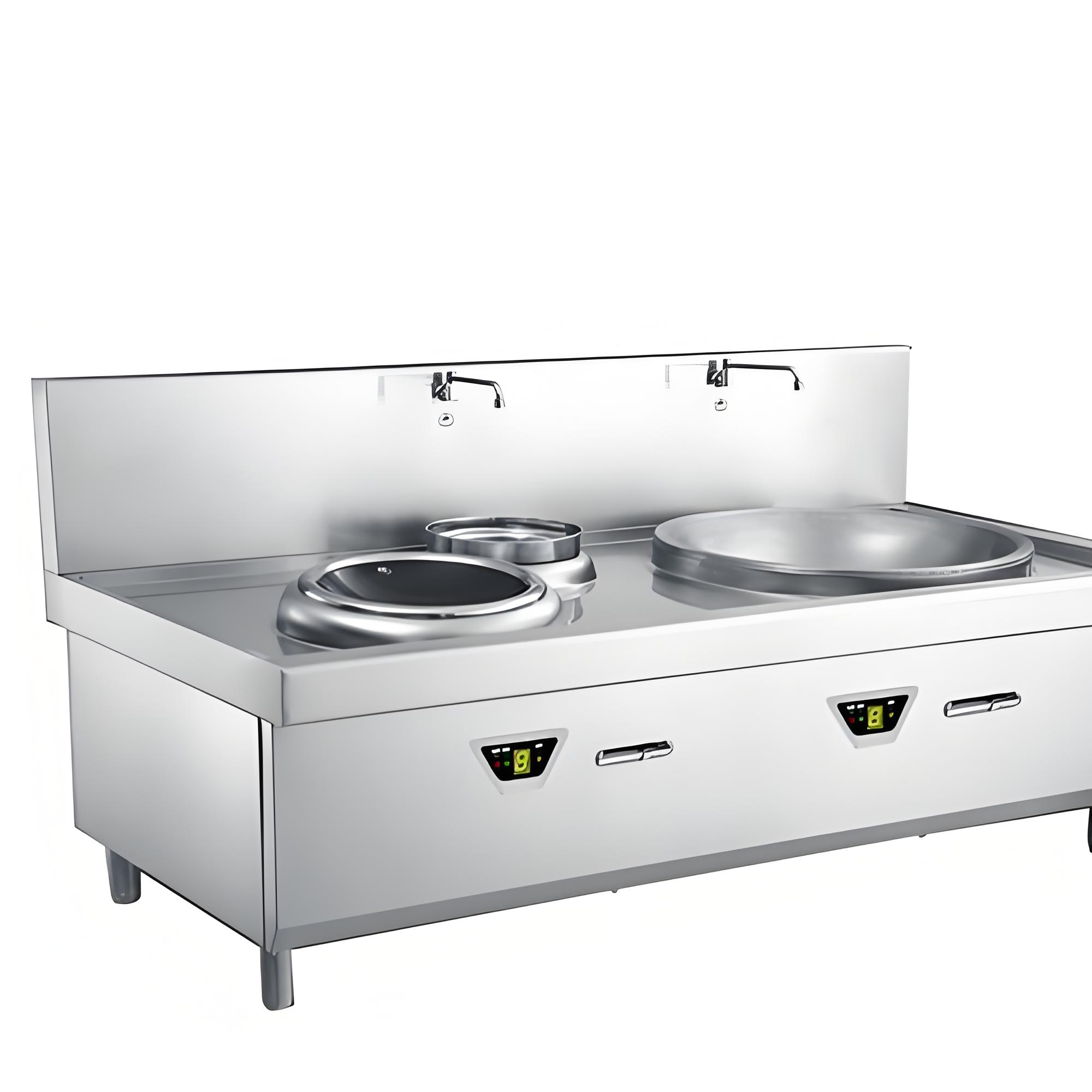In the bustling world of commercial kitchens, every decision counts when it comes to efficiency, cost-effectiveness, and environmental impact. As someone who has spent years immersed in the culinary equipment industry, I’ve witnessed firsthand the transformative shift from traditional gas stoves to modern commercial induction cookers. One question that frequently arises among restaurateurs, chefs, and kitchen managers is: How much more energy-efficient are commercial induction cookers compared to gas stoves?
This inquiry isn’t just about numbers; it’s about understanding the practical implications of these energy savings on operational costs, kitchen safety, and overall sustainability. In this article, I’ll delve deep into the mechanics of both cooking methods, present empirical data, and offer insights based on real-world experiences to provide a comprehensive answer.
The Basics: How Do They Work?
Before diving into the energy efficiency comparison, it’s crucial to grasp the fundamental differences in how commercial induction cookers and gas stoves operate.
Gas Stoves: The Traditional Flame
Gas stoves have been a staple in kitchens worldwide for centuries. They rely on the combustion of natural gas or propane to produce a flame, which directly heats the cookware. The process is straightforward:
Gas Supply: Natural gas or propane is fed into the stove through a pipeline or tank.
Ignition: A spark or pilot light ignites the gas, creating a flame.
Heat Transfer: The flame heats the bottom of the cookware, which in turn cooks the food.

Commercial Induction Cookers: The Electromagnetic Revolution
Induction cooking, on the other hand, is a relatively newer technology that uses electromagnetic fields to heat cookware directly. Here’s how it works:
Electromagnetic Coil: Beneath the cooktop surface lies a coil of copper wire.
Alternating Current (AC): When an AC current passes through the coil, it generates a rapidly changing magnetic field.
Induction in Cookware: If the cookware is made of a ferromagnetic material (like cast iron or certain stainless steels), the magnetic field induces eddy currents within the metal.
Resistive Heating: These eddy currents encounter resistance in the metal, generating heat directly within the cookware.
Energy Efficiency: The Core Comparison
Now, let’s get to the heart of the matter: energy efficiency. To quantify this, we need to consider several factors, including heat transfer efficiency, idle energy consumption, and overall energy usage in typical kitchen scenarios.
Heat Transfer Efficiency
One of the most significant advantages of induction cooking is its superior heat transfer efficiency. In a gas stove, a substantial amount of heat is lost to the surrounding environment. The flame heats not only the cookware but also the air around it, the stove’s surface, and even the kitchen itself. This means that only a fraction of the energy from the gas is actually used to cook the food.
Induction cookers, by contrast, heat the cookware directly. Since there’s no flame and minimal heat loss to the surroundings, nearly all the energy consumed goes into heating the food. Studies and real-world measurements indicate that induction cookers can achieve heat transfer efficiencies of up to 90%, whereas gas stoves typically hover around 40-55%.
Idle Energy Consumption
Another often-overlooked aspect is idle energy consumption. Gas stoves, when left on (even at a low flame), continue to consume gas. This is not only wasteful but also poses a safety risk. Induction cookers, however, only consume energy when cookware is detected on the cooking zone. As soon as the cookware is removed, the induction process stops, and energy consumption drops to near zero.

Energy Usage in Typical Scenarios
To provide a more tangible comparison, let’s consider a few common kitchen tasks and estimate the energy usage for both gas stoves and induction cookers.
Scenario 1: Boiling Water
Boiling water is a fundamental task in any kitchen. Let’s assume we’re boiling 5 liters of water from 20°C to 100°C.
Gas Stove:
Specific heat capacity of water: 4.18 J/g°C
Mass of water: 5000g
Temperature change: 80°C
Energy required: 5000g * 4.18 J/g°C * 80°C = 1,672,000 J or 1.672 MJ
Assuming 45% efficiency: Actual energy consumed = 1.672 MJ / 0.45 ≈ 3.716 MJ
Induction Cooker:
Same energy required to heat the water: 1.672 MJ
Assuming 90% efficiency: Actual energy consumed = 1.672 MJ / 0.9 ≈ 1.858 MJ
Energy Savings: (3.716 MJ – 1.858 MJ) / 3.716 MJ * 100% ≈ 50%
Scenario 2: Simmering a Sauce for 1 Hour
Simmering requires maintaining a low, consistent heat over an extended period.
Gas Stove:
Assume a low flame consumes 0.5 kW (this is a rough estimate; actual consumption may vary).
Energy consumed in 1 hour: 0.5 kW * 1 h = 0.5 kWh or 1.8 MJ
Adjusting for 45% efficiency: Actual energy used for cooking = 1.8 MJ * 0.45 = 0.81 MJ
Total energy consumed (including losses): 1.8 MJ
Induction Cooker:
Assume a low setting consumes 0.3 kW.
Energy consumed in 1 hour: 0.3 kW * 1 h = 0.3 kWh or 1.08 MJ
Adjusting for 90% efficiency: Actual energy used for cooking = 1.08 MJ * 0.9 = 0.972 MJ (but since we’re calculating total consumption, we use 1.08 MJ)
However, since induction is more efficient, the “effective” cooking energy is higher, but for total consumption, it’s 1.08 MJ
Energy Savings: (1.8 MJ – 1.08 MJ) / 1.8 MJ * 100% ≈ 40%

Scenario 3: High-Heat Searing
Searing meat requires intense, direct heat.
Gas Stove:
Assume a high flame consumes 3 kW.
Energy consumed in 10 minutes (0.167 hours): 3 kW * 0.167 h = 0.501 kWh or 1.8036 MJ
Adjusting for 45% efficiency: Actual energy used for cooking = 1.8036 MJ * 0.45 = 0.81162 MJ
Total energy consumed: 1.8036 MJ
Induction Cooker:
Assume a high setting consumes 2.5 kW.
Energy consumed in 10 minutes: 2.5 kW * 0.167 h = 0.4175 kWh or 1.503 MJ
Adjusting for 90% efficiency: Actual energy used for cooking = 1.503 MJ * 0.9 = 1.3527 MJ (but total consumption is 1.503 MJ)
Energy Savings: (1.8036 MJ – 1.503 MJ) / 1.8036 MJ * 100% ≈ 16.7%
Note: The searing scenario shows lower savings percentage-wise because both methods are operating at high efficiency relative to their maximums, but induction still maintains an edge.
Aggregated Data: A Comparative Table
To summarize, here’s a table comparing the energy consumption of gas stoves and induction cookers across the three scenarios:
| Scenario | Gas Stove Energy Consumed (MJ) | Induction Cooker Energy Consumed (MJ) | Energy Savings (%) |
|---|---|---|---|
| Boiling 5L Water | 3.716 | 1.858 | 50% |
| Simmering for 1 Hour | 1.8 | 1.08 | 40% |
| High-Heat Searing (10 min) | 1.8036 | 1.503 | 16.7% |
Beyond Energy Efficiency: Additional Benefits
While energy savings are a significant draw, commercial induction cookers offer several other advantages that contribute to their growing popularity.

Safety
Induction cookers are inherently safer than gas stoves. There’s no open flame, reducing the risk of fires. Additionally, since the cooktop itself doesn’t get hot (only the cookware does), there’s less chance of burns. This is particularly important in busy commercial kitchens where safety is paramount.
Precision and Control
Induction cookers provide unparalleled precision and control over cooking temperatures. The heat can be adjusted instantly, and many models offer precise temperature settings, allowing chefs to execute delicate recipes with greater accuracy.
Speed
Induction cooking is generally faster than gas. The direct heat transfer means water boils quicker, and foods cook more rapidly. This can lead to increased kitchen throughput and improved customer satisfaction.
Cleanliness
Since the cooktop doesn’t get hot, spills and splatters don’t burn onto the surface. This makes induction cookers easier to clean, reducing downtime and maintenance costs.
Real-World Case Studies
To further illustrate the benefits, let’s look at a couple of real-world examples where restaurants made the switch from gas to induction.
Case Study 1: A Busy Urban Bistro
A bistro in downtown New York, serving 200+ meals a day, replaced its gas stoves with induction cookers. Over six months, they reported a 35% reduction in their gas bill (which was substantial, given their high volume). Additionally, the kitchen staff noted improved working conditions due to the reduced heat output and easier cleanup.

Case Study 2: A High-End Fine Dining Restaurant
A Michelin-starred restaurant in Paris switched to induction to enhance the precision of their cooking. The head chef reported that the ability to control temperatures with such accuracy allowed them to execute complex dishes more consistently. While the energy savings were a welcome bonus, the primary benefit was the improved quality of the food.
Addressing Common Concerns
Despite the numerous advantages, some chefs and restaurateurs are hesitant to switch to induction due to a few common concerns.
Cookware Compatibility
One of the most frequent questions is about cookware. Induction cookers require ferromagnetic cookware to work. However, most professional kitchens already use compatible pots and pans, and those that don’t can easily upgrade. Moreover, many manufacturers now offer induction-compatible lines, making the transition smoother.
Initial Cost
Induction cookers can have a higher upfront cost compared to gas stoves. However, when considering the long-term energy savings, reduced maintenance costs, and potential incentives for energy-efficient upgrades, the total cost of ownership often favors induction.
Learning Curve
There’s a perception that induction cooking requires a steep learning curve. While it’s true that chefs need to adjust to the different heat response, most find that the precision and control outweigh the initial adjustment period. Many manufacturers also offer training and support to ease the transition.

Conclusion: The Verdict on Energy Efficiency
After years in the industry and countless hours spent analyzing data and observing real-world applications, it’s clear that commercial induction cookers are significantly more energy-efficient than gas stoves. On average, you can expect energy savings ranging from 16.7% to 50%, depending on the cooking task. When you factor in the additional benefits of safety, precision, speed, and cleanliness, the case for induction becomes even more compelling.
For restaurateurs looking to reduce operational costs, enhance kitchen safety, and improve the quality of their food, making the switch to induction is a decision that pays dividends in more ways than one.
Related Q&A
Q: Can I use my existing pots and pans with an induction cooker?
A: It depends on the material. Induction cookers require ferromagnetic cookware, such as cast iron or certain stainless steels. To test if your cookware is compatible, try sticking a magnet to the bottom. If it sticks, it should work with induction.
Q: Are induction cookers more expensive to maintain?
A: Generally, no. Induction cookers have fewer moving parts and don’t require gas lines or igniters, which can reduce maintenance costs over time. Additionally, the absence of an open flame means less wear and tear on the cooktop.
Q: How long does it take to boil water on an induction cooker compared to a gas stove?
A: Induction cookers typically boil water faster than gas stoves due to their direct heat transfer. The exact time difference depends on the model and settings, but you can expect a noticeable reduction in boiling time.
Q: Is induction cooking suitable for all types of cuisine?
A: Absolutely. Induction cookers are versatile and can handle everything from delicate sauces to high-heat searing. Many professional chefs around the world use induction for a wide range of cuisines.
Q: Are there any government incentives for switching to induction cooking?
A: In many regions, there are incentives and rebates available for businesses that upgrade to energy-efficient appliances, including induction cookers. Check with your local energy provider or government agency to see what programs are available in your area.



